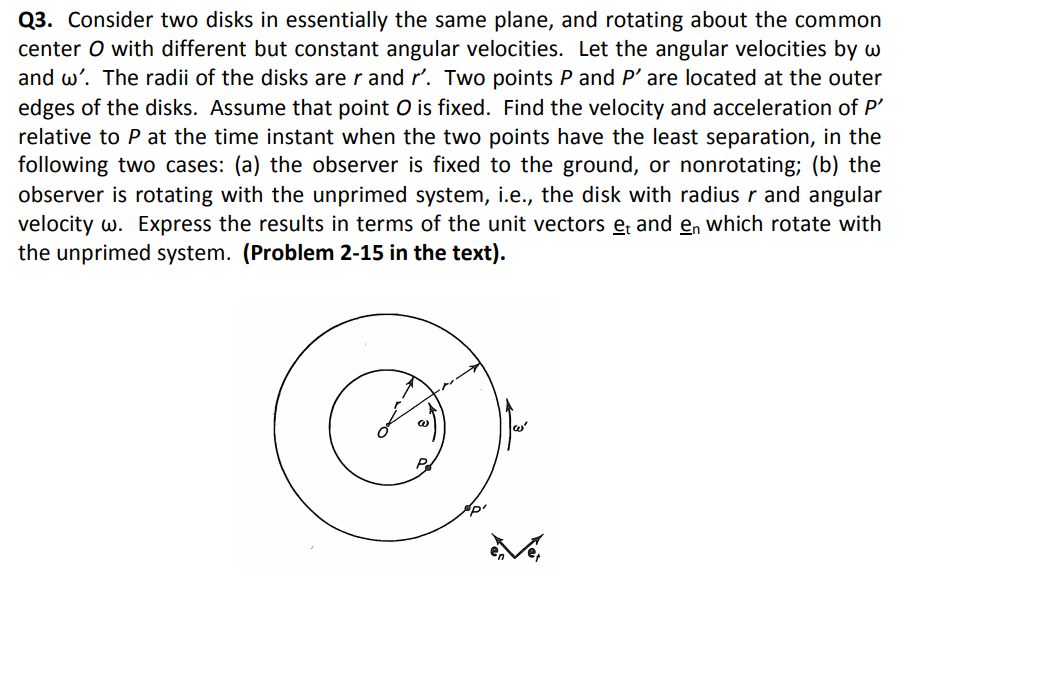Q3. Consider two disks in essentially the same plane, and rotating about the common center O with different but constant angular velocities. Let the angular velocities by w and w'. The radii of the disks are r and r'. Two points P and P’ are located at the outer edges of the disks. Assume that point O is fixed. Find the velocity and acceleration of P' relative to P at the time instant when the two points have the least separation, in the following two cases: (a) the observer is fixed to the ground, or nonrotating; (b) the observer is rotating with the unprimed system, i.e., the disk with radius r and angular velocity w. Express the results in terms of the unit vectors e and en which rotate with the unprimed system. (Problem 2-15 in the text).
Q3. Consider two disks in essentially the same plane, and rotating about the common center O with different but constant angular velocities. Let the angular velocities by w and w'. The radii of the disks are r and r'. Two points P and P’ are located at the outer edges of the disks. Assume that point O is fixed. Find the velocity and acceleration of P' relative to P at the time instant when the two points have the least separation, in the following two cases: (a) the observer is fixed to the ground, or nonrotating; (b) the observer is rotating with the unprimed system, i.e., the disk with radius r and angular velocity w. Express the results in terms of the unit vectors e and en which rotate with the unprimed system. (Problem 2-15 in the text).
Related questions
Question

Transcribed Image Text:Q3. Consider two disks in essentially the same plane, and rotating about the common
center O with different but constant angular velocities. Let the angular velocities by w
and w'. The radii of the disks are r and r'. Two points P and P' are located at the outer
edges of the disks. Assume that point O is fixed. Find the velocity and acceleration of P'
relative to P at the time instant when the two points have the least separation, in the
following two cases: (a) the observer is fixed to the ground, or nonrotating; (b) the
observer is rotating with the unprimed system, i.e., the disk with radius r and angular
velocity w. Express the results in terms of the unit vectors e; and en which rotate with
the unprimed system. (Problem 2-15 in the text).
Expert Solution
Step 1 Concept
As given in the problem is based on the concept of rotational motion.
The point P is located on the disk of radius r and it is rotating with constant angular velocity .
Now the point P' is located on the disk of radius r' and it is rotating with angular velocity .
As mentioned in the problem P and P' are separated by least separation.
Therfore consider the angular position of P separated by P' at this instant is
Then at point P, the normal unit vector is given by;
Trending now
This is a popular solution!
Step by step
Solved in 2 steps
